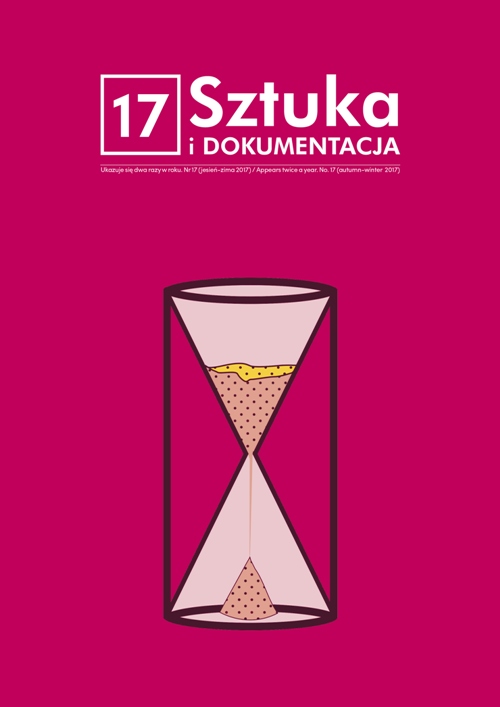Elementy Nowej Teorii Konserwacji Dziedzictwa Sztuki Wizualnej. Ratunek Dla Ochrony Dawnej Sztuki Nietypowej I Sztuki Współczesnej
Elements Of The New Theory Of The Conservation Of The Heritage Of Visual Art. Necessity For The Protection Of Atypical Old And Contemporary Art
Author(s): Iwona SzmelterSubject(s): Sociology of Art
Published by: Akademia Sztuk Pięknych w Gdańsku
Keywords: sztuka współczesna; sztuka nietypowa; konserwacja; teoria konserwacji; Iwona Szmelter
Summary/Abstract: ELEMENTS OF THE NEW THEORY OF THE CONSERVATION OF THE HERITAGE OF VISUAL ART, THE NECESSITY FOR THE PROTECTION OF ATYPICAL OLD AND CONTEMPORARY ART As a result of recent experience and international cooperation, it has become clear that for the taking of responsible and effective conservation decisions, it is necessary to modify the doctrines of conservation that had been created for the traditional heritage of art, to release them from the traditional restraints. The elements of the new theory include proposals for extended principles of research on the diverse heritage of visual art, the manner of conducting safe preservation and management, the dissemination of the results, as well as the social issues involved and the contribution of art to sustainable development. Due to this, it is possible to flexibly adapt these activities to suit the needs of atypical art from the past as well as that from contemporary times. The thesis of this study concerns the need to re-orientate the philosophy and attitudes towards conservation in the direction of the maintenance of the continuity of visual art. The goal of the initiative is to present a contribution to the creation of the new theory of conservation of this type of art, and define the new obligations of the curator of atypical old and modern art and contemporary art. According to the author, the effective care of this art requires three separate paths of activity. Conservation includes: first of all defining a philosophy of the conservation of the whole complex of material and immaterial values of the art, secondly defining the principles that form the basis of the new conservation theory, and thirdly determining suitable conservation methods, including the necessity to conduct scientific documentation and its archivisation. Along with the birth of electronic media, video art and the Internet, the autonomy of artistic projects, programming, the importance of duplication and multiple visualizations, the current crisis of concepts that have traditionally been the determinants of the value of a work of art (such as originality, authenticity, uniqueness) require a re-examination. Art of this type is expressed not only by the material and the object, or the object together with the intellectual context, but it can have a virtual body and be reproduced, or exhibited in the so-called synthesis of arts (German: Gesamtkunstwerk). In this framework, the analysis of the work and recognition of its values becomes a separate, time-consuming research project in which the synergy of multidisciplinary analyses plays a large role. They consist of humanistic studies, searching for the context of the creation of a work, technical analysis of the materials, obtaining so-called first-hand information, such as through an authorized interview with the artist (or his co-workers). It is important to include all data in the so-called the conservation registration of an artistic work (extended ‘object ID’). This comprises a source of knowledge about the object, the original idea and message of the author, the materials used and their meaning for the work, as well as guidelines for future conservation-restoration, mounting and display in exhibitions, as well as guidelines concerning storage and transport. The principles of the preservation of the visual arts include indications, wider than before, concerning the responsibilities of the conservator as an advocate not only of the well-being of the work, but also the rights of its author. The preservation process may take a number of forms, starting from the so-called ‘preservation through documentation’ of art objects where their intrinsic ephemerality is the goal of the author of the work, through active conservation with elements of restoration (depending on the type of work involved), and various forms reconstruction or re-enactment. The latter cease to be the subject of a ‘taboo’ among the conservation community as long as they respect the integrity and copyright of the work. The new conceptual framework of conservation has to ensure the timeliness and adequacy of the means adopted for the preservation of the heritage of visual art with regard to current needs and the development of culture.
Journal: Sztuka i Dokumentacja
- Issue Year: 2017
- Issue No: 17
- Page Range: 155-180
- Page Count: 25
- Language: Polish

